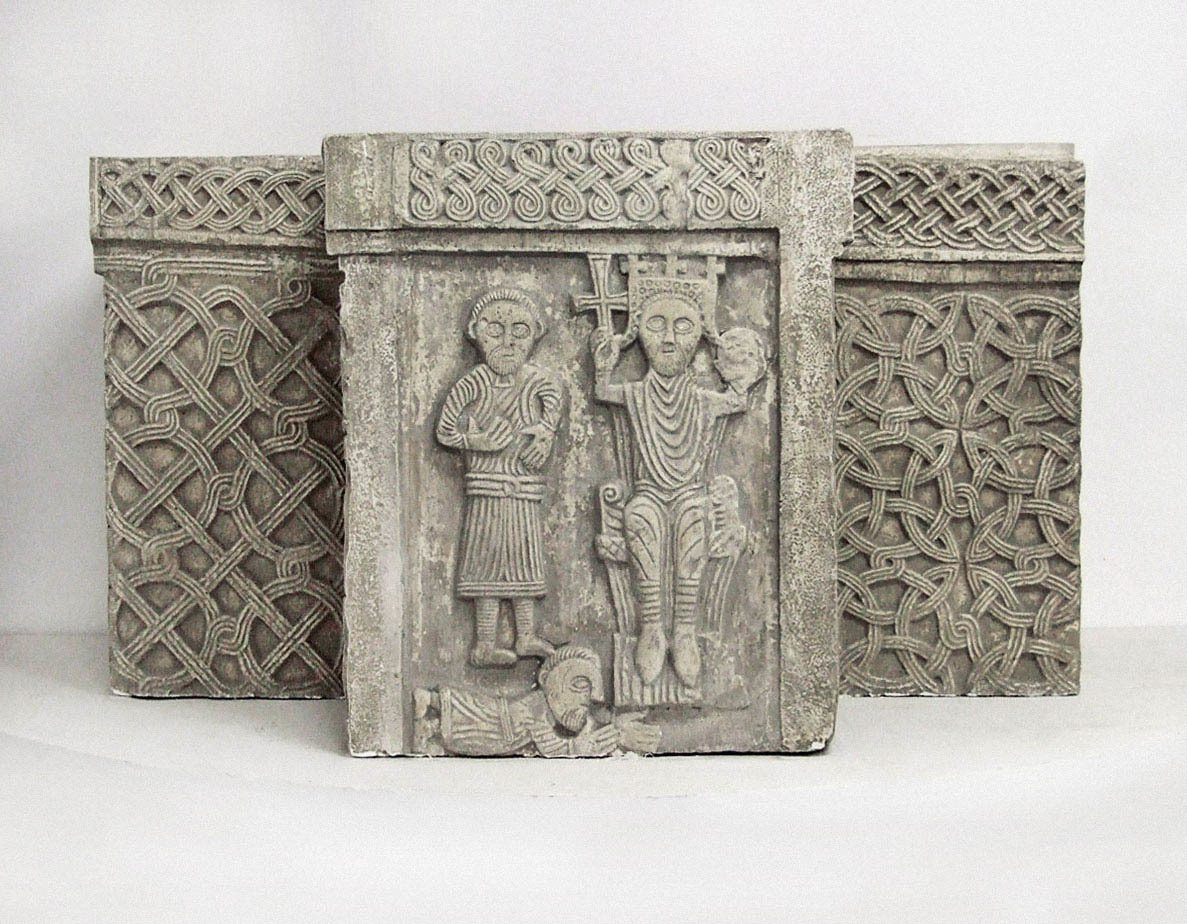The Equestrian Statue of King Tomislav
One of our very first animalier artists, Frangeš Mihanović did a large number of sculptures featuring animals, which he studied with a great deal of attention. His small-scale sculptures of turkeys, Pfeiffer hogs, cows, bulls and horses are well known. But it was only in the Tomislav Monument that he got, for the first time, the chance to do an equestrian figure on a monumental scale.
The subject of a monumental equestrian figure has an important role in the history of sculpting and usually features important historical personalities, making them strong, bold and noble heroes, the intention being that their glory be preserved for future generations. The topic appeared in Antiquity, and the earliest sculpture of the type extant is a bronze monument to Marcus Aurelius of 176. Interest in this subject matter did not wane in the following centuries. In the Renaissance and Baroque there were, for example, Donatello’s Gattamelata of 1453 and Verocchi’s Colleoni, 1480-1488. The 19th century had Schluter’s Gross Kurfurst and Hildebrand’s Bismarck, the 20th Meštrović’s Indians. In the Croatian context of equestrian figures of the end of the 19th and in the first half of the 20th century, along with the sculpture of King Tomislav one has to make reference to Ban Josip Jelačić by Anton Dominik Fernkorn (1866)
In designing his monument, Fernkorn drew on the works of earlier periods. The Ban Josip Jelačicc Monument certainly recalls, in its form and the pose of the horse itself, Donatello’s Gattamelata. Taking its cue from Antiquity, it is static, and as for the representation of the Ban, it recalls statues of the Baroque because of the multitude of details, the volume, the deep modelling.
In its pose, Frangeš Mihanović’s King Tomislav is most similar to the Colleoni, although in terms of calm and dignity it might be closer to Hildebrand’s Bismarck.
F
rangeš Mihanović, as animalier, devoted great attention to the form of the horse. As well as paying close attention to equine anatomy, he also in the depiction of Tomislav went in for the study of archaeology, i.e., the appearance of the Old Croatian rulers. Accordingly he placed on Tomislav’s head a crown with ear shields and three crosses on the brim, after the crown of the ruler from the Split baptismal font of the 9th century, a similar crown appearing in a fresco in the pre-Romanesque Church of St Michael in Ston. This was a crown that was also characteristic of the Frankish kings. Frangeš Mihanović also looked for Old Croatian models for other garments and accoutrements, and so the shirt, cloak and spurs were done according to the patterns of archaeological finds of the time.
The artist’s approach to the execution of the royal figure can be best explained by his perception of Tomislav, Frangeš Mihanović recording in his notes: “I understood Tomislav to have been an extraordinarily just and mighty ruler, who gathered the whole of the Croatian people around him because of his virtues and goodness, which he showed in his deeds. It is an incontrovertible historical fact that he defeated the army of Simeon of Bulgaria that was invading Croatia, but he did not take advantage of this victory, stopping at the frontier and not hunting down the beaten enemy… So I wanted to emphasis the main characteristics of the Croatian king and the strongest feeling of all Croats, a feeling for right, acknowledging everyone their own while defending their own right.”
It was this feeling of righteousness that was the guiding thread and characteristic that he wished to weave into the figure of the first Croatian king.
So he depicted Tomislav riding proudly on horseback, holding in his left hand an orb, symbol of royal might, and in his right a sceptre with a cross at the top, symbol of stability and governance. The sword is girt about his waist, symbolising his peace-loving nature
The horseman is placed upon a stone plinth, and dominates the view of the square named after him.

Robert Frangeš Mihanović, sketch for the monument to King Tomislav, bronze, 1928-38. (MZ-111) (photo by Goran Vranić)

Baptistery of St. Ivan from the Split Cathedral, plaster cast, 11th century (HZ-110)

Legenda2: Robert Frangeš Mihanović, Head of King Tomislav, plaster, 1928-1938 (NZ-195) (photo by Goran Vranić)

Robert Frangeš Mihanović, Sketch for the King Tomislav monument, plaster, 1928-38. (MZP-641) (photo by Goran Vranić)